Succulent plants are a darling of the gardening world – and for a good reason. Their amazing green foliage, exciting shapes, and an assortment of bright colors know how to create joy and calmness and uplift our moods.
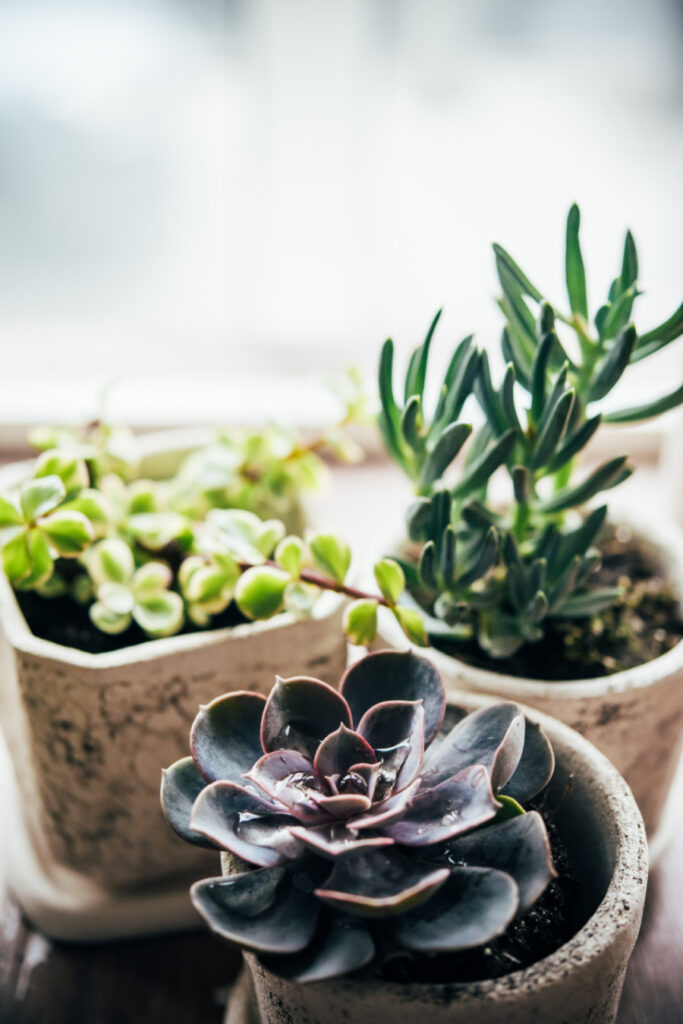
Succulents come in hundreds of varieties and can be grown indoors or in your backyard. You can also find them in a rainbow of colors from purple to green, pink, and turquoise –it’s no wonder they are so popular!
Succulents are often considered the ultimate low-maintenance plants, but they’ll need your care to stay alive. This post will discuss succulents, including what they are and how to take care of them.
Let’s get started!
What are succulents?
Succulent are drought-tolerant plants with thick fleshy tissues that store water. Some of these plants, like cacti, have no leaves and store their water in the stem, while others, like agave, have fleshy leaves that store their water.
Most people prefer succulents as houseplants because of their unique leaves and the ability to add a modern yet natural element to your home. Their appearance and natural look provide feng shui in a space, meaning they create a favorable environment for you to thrive.
There are different types of succulents depending on their care. Some are grown indoors, while others thrive well outdoors.
The common types of succulents include; Jade plants, Aloe vera, Echeveria, Aeonium, and Aeonium, to name a few.
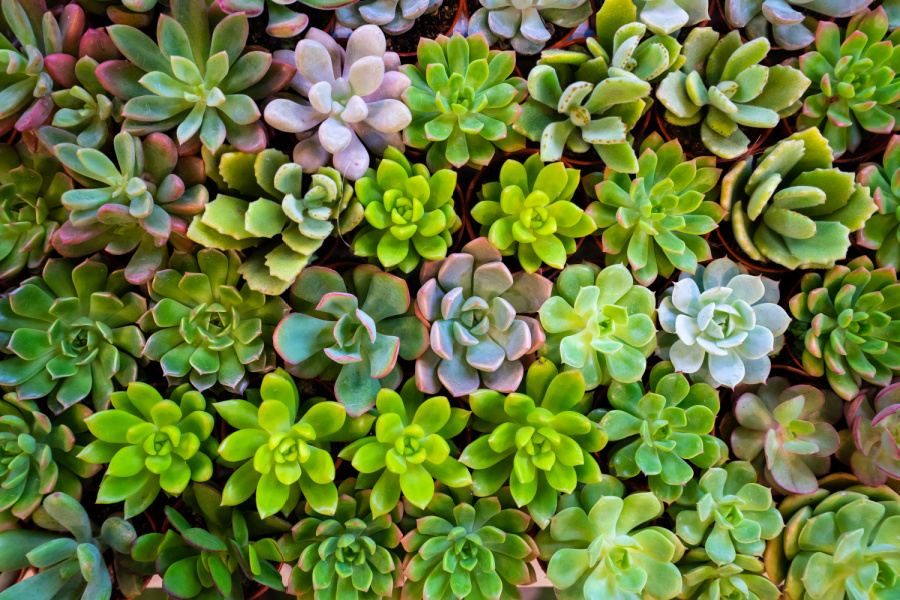
How do I grow succulents in my home?
Naturally, succulents grow in dry and warm climates with a lot of sunlight. You’ll need to replicate these conditions in your home, especially if you don’t live in a warm or dry area.
Here are important things to note as far as growing the succulents is concerned:
Hardiness
Yes, succulents thrive in deserts, but most are fairly cold-hardy. Deserts get pretty chilly at night – even below freezing.
However, the exact hardiness will vary based on the species. Some will die at the first sign of frost, while others can survive the winter weather on the outside.
Where to grow the succulents
Whether you want to grow your succulents indoors or outside, ensure you keep them in a dry location where they can get bright light. The plants will thrive well in pots or on the ground, provided they get the right care.
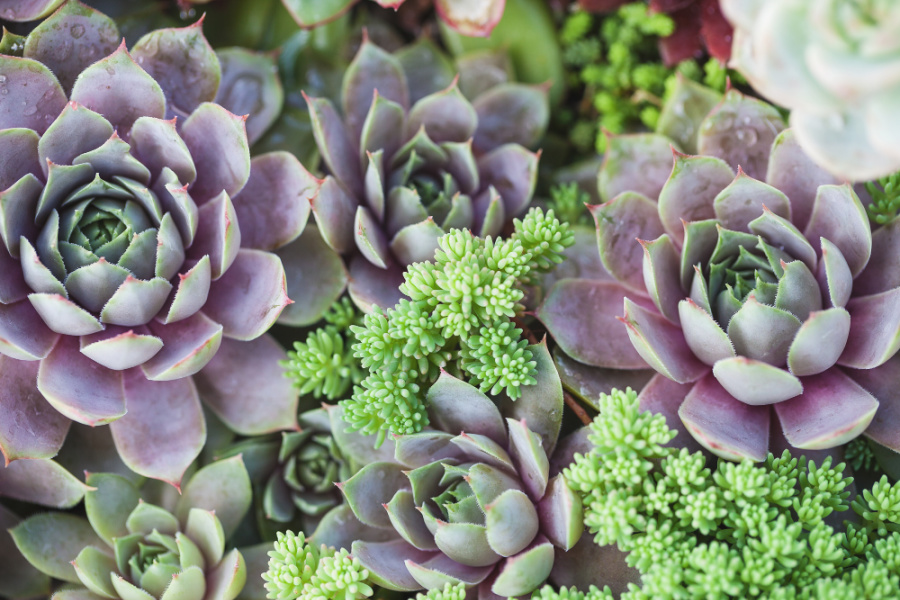
Container
The pot you use highly determines the success of your succulents. Always use containers with good drainage holes; Ideally, the holes should be 1 to 2 inches larger than your nursery containers during repotting.
Don’t use glass containers for long-term potting as they usually prevent the roots from breathing, making them rot with time. Instead, it would be best to use pots with breathable materials like ceramic and terracotta pots, which promote air circulation and water drainage.
Also, remember to add about a third full of pre-moistened potting mix to your container before placing your plant. After that, fill the remaining part with pre-moistened cactus mix and see your plant flourish!
How do I take care of succulent plants?
It turns out that having the perfect succulents isn’t as straightforward as it seems on Pinterest or in the garden and home magazines. Yes, the plants can thrive even when neglected, but they’ll die if the environment isn’t right.
Here is how to take care of succulents:
Choose the right succulents first
Choosing the right succulent plants for your indoor or outdoor spaces is the first step to achieving the perfect plants. However, when asked to choose from beautiful varieties in the greenhouse, the chances are that you’ll ignore this advice and pick what looks nice, right?
That’s a recipe for disaster – trust me! Different succulent plants will perform differently under different settings.
Some are best fit for indoor growing, while others thrive in outdoor spaces. For instance, picking succulent plants that don’t like full sun and thrive in the shade and low light will be perfect for indoor settings.
Generally, succulents with bright colors (like purples, oranges, and reds) perform poorly indoors. They demand direct sunlight that’s only available in the outdoor spaces.
If you want succulents for indoor spaces, it would be ideal if you started with natural green succulents; most of them don’t need too much light to thrive. Examples of such succulents are Gasteria, Haworthia, and Snake plants
Keep them watered
Watering is one crucial part of caring for your plants. While most succulents can last long without much water, that doesn’t necessarily mean you shouldn’t water them completely.
These plants use less water, and the rule of thumb is to water succulents thoroughly at least once every week during summer, twice a month in spring and autumn, and once every month in winter. Also, remember to water your plants only when the soil is completely dry.
Succulents hate wet feet, so putting in excess water will only make them rot and die. So, always check the soil before you water succulents – you can stick your finger at least two inches deep and only water if it’s bone dry.
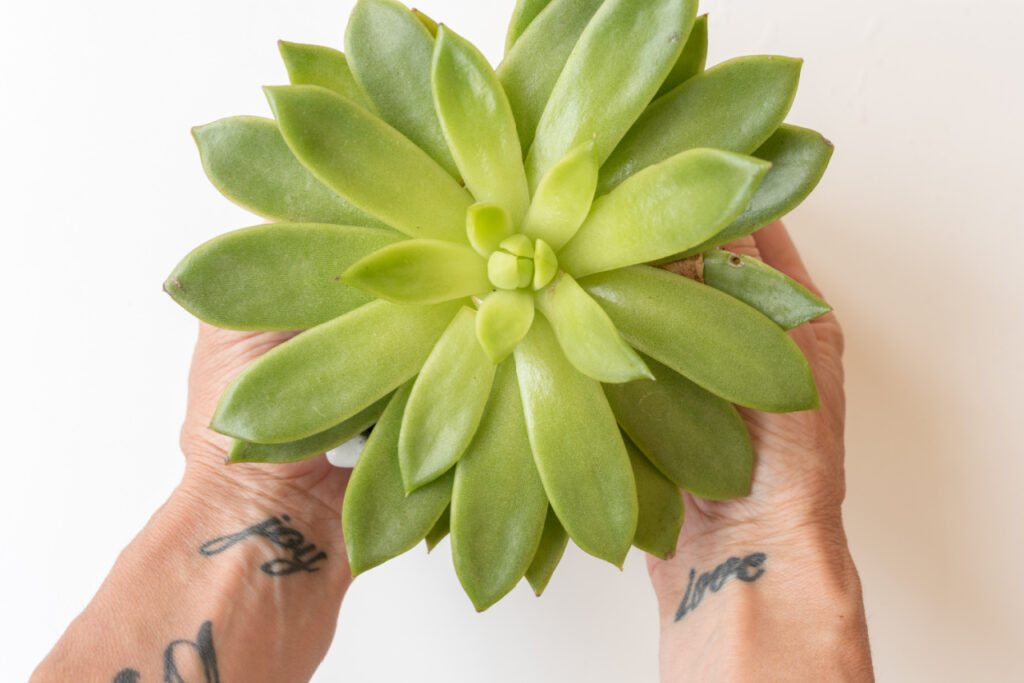
Provide them with enough sunlight exposure
Succulent plants offer brilliant colors and thrive well under enough light – at least six hours of full sun daily. While you can grow them in the shade, their colors will not be as intense – the more the sun, the better!
While achieving long hours of direct sunlight can be easy for outdoor succulent plants, the same is hard for indoor succulents. Indoors, place your succulents in or near a sunny window during winter and fall, and provide them with filtered light during the summer months.
If you notice that the plant is trying to reach for the window, move it to a sunnier spot or use a frow light. However, check the plant’s ideal exposure to avoid sunburn.
Pest control
Like any other plant, succulents are prone to certain pests. For instance, Aphids and thrips attack the plants’ flower buds; mealybugs attack the leaf axils and scale colonize stems.
You can control these pests by giving the plants excellent air circulation. You can also spray the plants with 70% rubbing alcohol diluted using 50% water.
Scrape off the scale and wash it using horticultural oil and soap if it persists. You can also isolate the affected plants immediately to avoid the spread of pests and diseases, then clean the area thoroughly.
Keep the plants dry to avoid mold, especially if you live in humid climates.
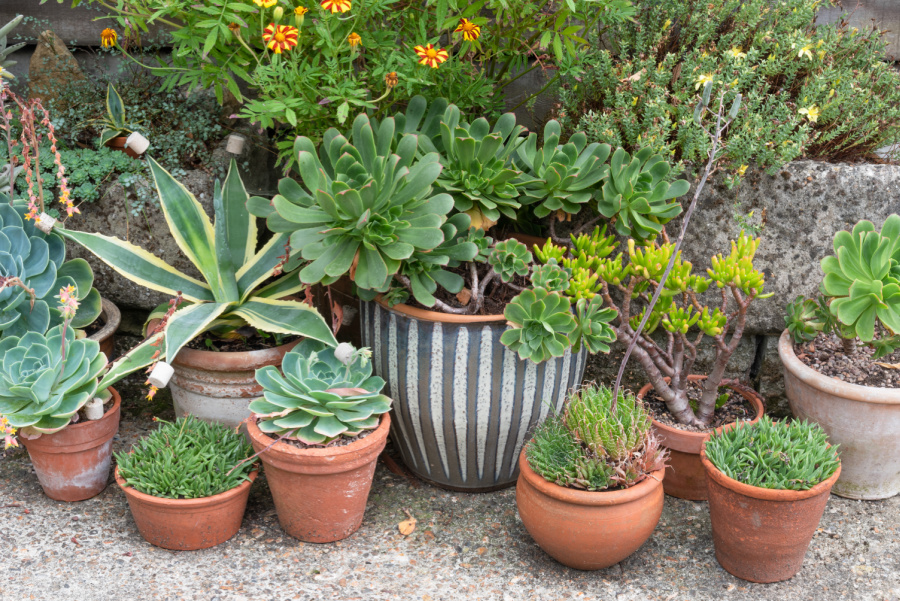
Feed them
Succulent plants do not need much fertilizer, but you can add a little fertilizer during the summer and spring growing season. Ensure that you do not overfertilize your plants, as this stimulates faster growth and weakens your plants.
Also, do not fertilize your plants during the colder autumn and winter months, leading to weak and leggy growth.
Use the right soil
When caring for succulent plants, soil matters a lot, so watch out to ensure you are not using the wrong soil mix. You need less dense soil that allows for fast draining, meaning the everyday compost doesn’t work.
You can buy a dedicated soil mix, like The Succulent Cult Store’s Organic Potting Soil, designed for succulent plants. Make sure you repot your plants at least once every two years during the growing season.
Watch the temperature
Succulents perform the best in temperatures ranging from 60 degrees to 80 degrees. Also, the plant can survive cooler or warmer indoor conditions but not extreme heat or frost. It’s advised that you take your outdoor succulents inside when temperatures drop to below 50 degrees.
Pruning
Certain succulents like Crassula, Graptopetalum, Echeveria, and Aeonium should be regularly pruned to maintain their size and shape. However, most others survive well without pruning during their lifetime.
If your succulents start to get sparse and leggy, you can trim or pinch them to maintain their compact shape. Prune the weak and leggy extension by snipping it off with sharp clippers, pinching it using your finger, or cutting it with heavy-duty shears for thicker stems.
You can remove spikes and dead flowers at any time. Also, remember that summer or spring is the best time to prune for shape.
Keep your succulents clean
Your indoor plants will inevitably pick up dust on their surface, affecting their growth. To avoid this, wipe off your succulent spines and leaves using a damp cloth or a soft paintbrush to clean the hard-to-reach areas.
Are succulents toxic to pets?
This is one of the most asked questions about succulents, but it bears repeating: are succulent plants toxic to pets? Unfortunately, some succulents can be poisonous to pets, while others are completely non-toxic.
So, if you’re planning to grow some succulents in your home and are concerned about your pet’s safety, I’d recommend you research your specific variety. Here is a website that names some of the toxic and non-toxic succulents.
The bottom line
Today, succulents are understandably everywhere. Their low maintenance, easy-to-grow nature, and jaw-dropping beauty and variety make them almost irresistible.
But unless you want to buy the fake (but real-looking) versions of these plants, you’ll need to take care of succulents to help them stay alive. This post provides ten succulent care tips to help you take care of your succulents.
Good luck as you use it to improve your home’s appearance!
Leave a Reply